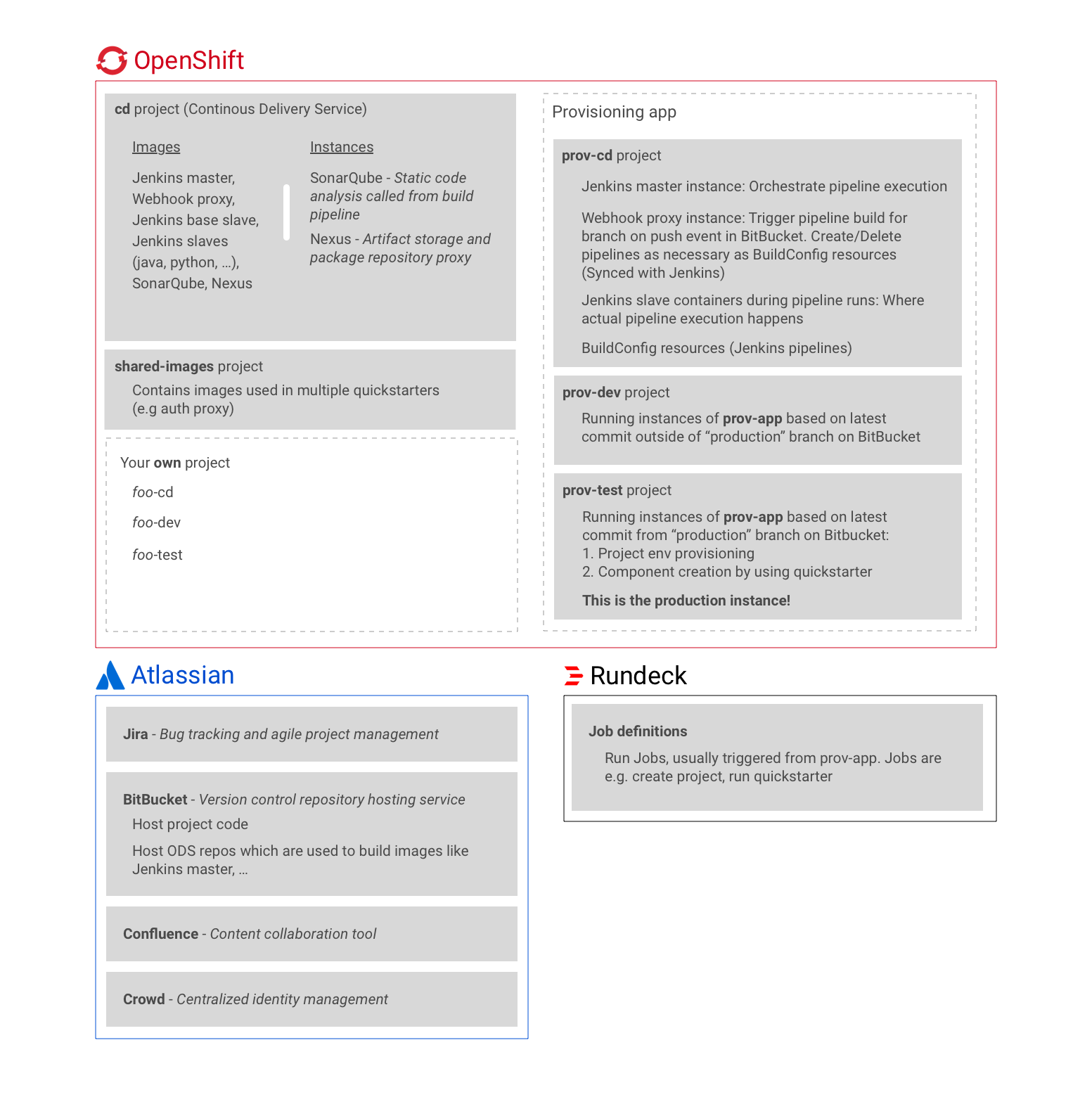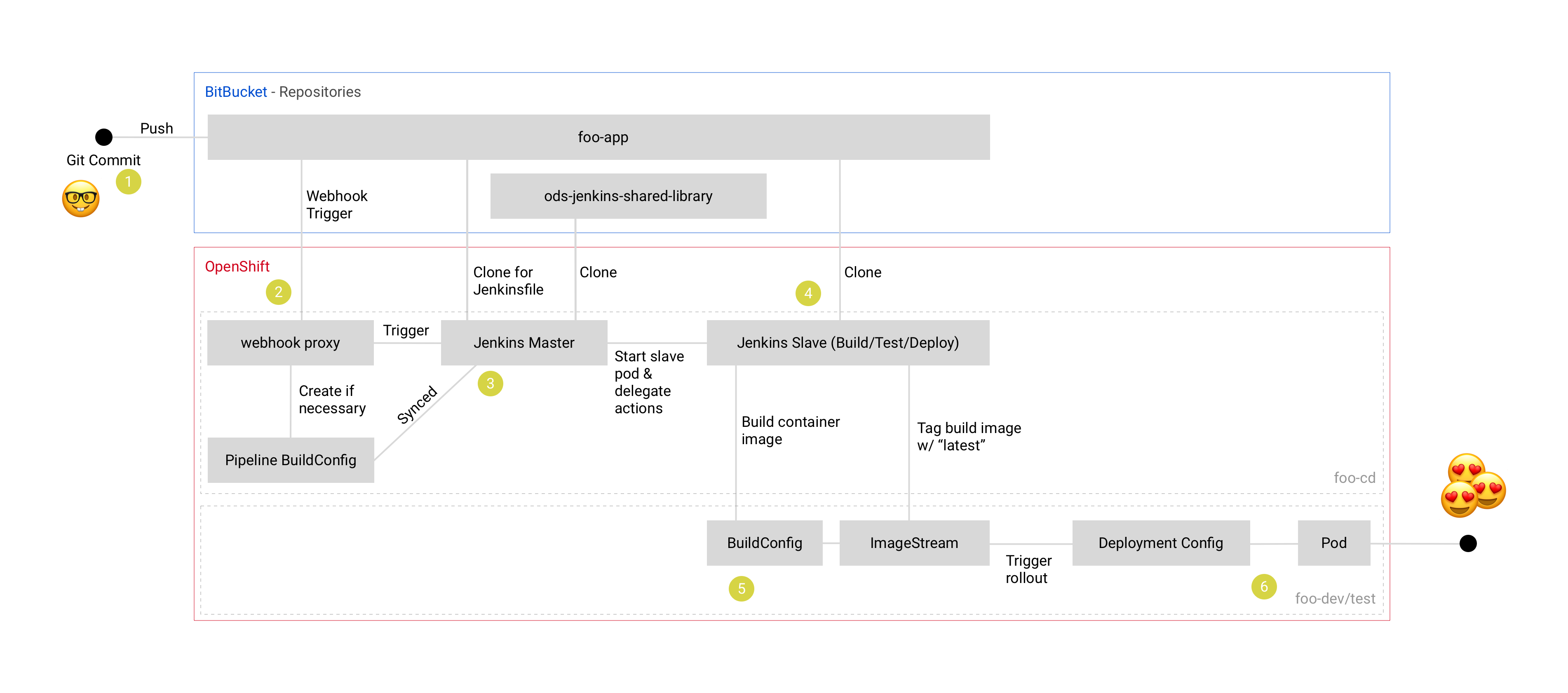Introduction to OpenDevStack
What is OpenDevStack?
When we started with Redhat’s OpenShift we were blown away by the 100s of possibilities to use it, while there was not anything along "This is how you make it work for your org".
Its catalog provides items for almost everything - yet what we wanted is to enable people to quickly introduce Continous delivery and standardized technology archetypes. We call this lean, empowered governance.
So what does OpenDevStack now provide?
-
A set of images to get the CI infrastructure running, called ods-core. It also contains ansible runbooks to get the atlassian suite going.
-
A shared jenkins library that harmonizes the way you build, test, govern and deploy.
-
A set of technology quickstarters that already provide the complete CI/CD integration, w/o anything to worry about for the engineer
-
A small provision application that gives you one place to start, no matter if you want to start a new initiative, or enhance and existing one.
Using OpenDevStack
Create an integrated OpenDevStack project
Trigger project creation thru the provisioning application to get a new project. The web GUI of the provisioning app is located at https://prov-app-test.<app-domain-of-your-openshift-cluster>;.
When openshiftproject == true, this will also create OpenShift projects, namely <project-KEY>-dev and <project-KEY>-test.
A Jenkins deployment will be created in the <project-KEY>-cd project to allow each project full freedom of build management. This deployment is based on common jenkins images from the CD namespace.
Pull a quickstarter into your project
Open the web GUI of the provisioning app https://prov-app-test.<app-domain-of-your-openshift-cluster>;.
This time, rather than new initiative, pick modify and select your project. Pick a matching quickstarter. If no framework fits to your needs, choose the
be-plain-docker quickstarter.
Result after quickstarted
Now you got the boilerplate of the picked quickstarter in your BitBucket project in its own repository, which the provisioning app created. Also, CI/CD is already working - you can verify this as the boilerplate application runs in the <project-KEY>-test project. This was deployed through a Jenkins pipeline, which is triggered via webhooks from BitBucket.
Checking in my app code
Create a branch in the newly created repository - once pushed this will deploy your application to the <project-KEY>-dev project. After merging your branch to master, the update is avilable in the <project-KEY>-test project.
The branch-to-environment mapping is defined in the Jenkinsfile, used by the jenkins shared library, and can be tailored to your needs.

